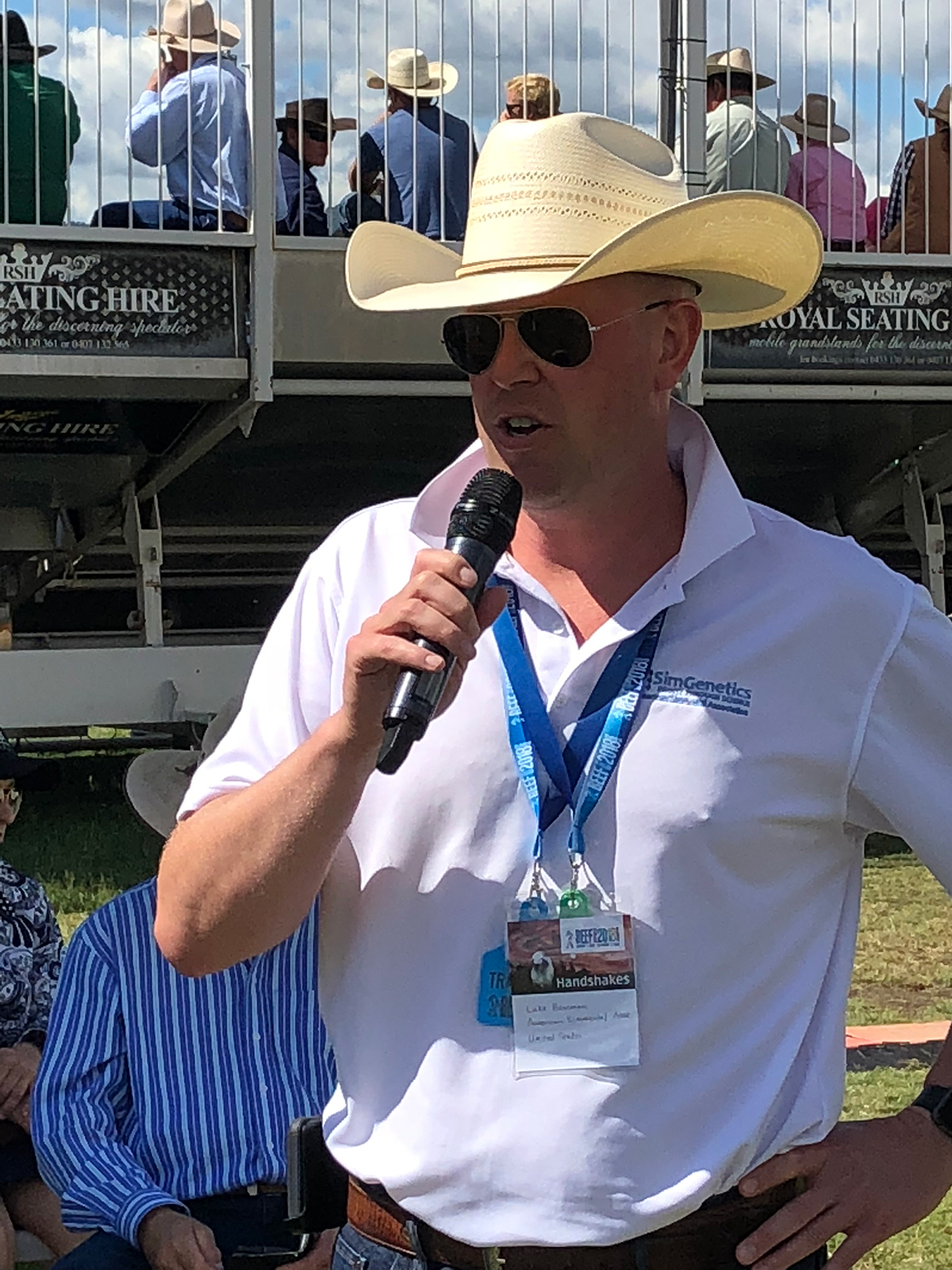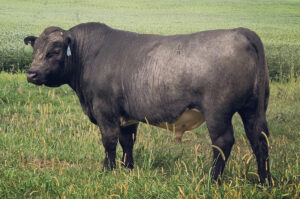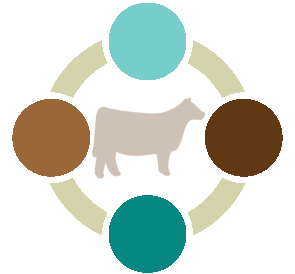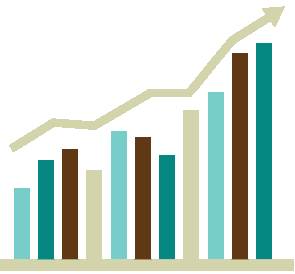BSG Breeding & Marketing Philosophies
Herd Evaluation: There is More to BSG Stockmanship
Style Needs Substance…
The Overblown Divide
Whoever said you can’t have cattle that catch a trained cattleman’s eye and move the profitability needle to the right simply hasn’t tried hard enough or refused to even get off of first base. Somewhere in our not-so-distant past, likely just a few years after EPDs came out and the showring started losing industry relevance fast, a narrative took root that you must choose between “commercially relevant” and “visually attractive” cattle. People decided you must have only one or the other. And this arrogant sentiment still thrives today. We reject that. At Bowman Superior Genetics, we don’t chase stereotypes but instead build cattle that simply belong anywhere Shorthorn genetics are incorporated for the purpose of enterprise profitability. The best of both worlds isn’t a myth; it’s a founding goal. But achieving it requires more than telling you our cattle can do both. It takes realistic goals, breeding with intention, stacked pedigrees, and of course enough discipline to do it year after year without worry of the annually overhyped “next best thing.”
It’s Not All About the Paperwork Though
Let us be clear: cattle bred strictly off paper with no idea of their phenotypic build or appeal often perform like it. They are about as stout as a piece of paper, plus paper doesn’t breed back. We’ve all seen cattle that grow like mad, or ultrasound scan like royalty but then fall apart when asked to breed in a 60-day window or raise a calf without a feed bucket.
Yet, Show Ring Type Certainly Needs Data & Information
Conversely, we’ve certainly seen the damage that comes from selecting strictly for ‘look’ without keeping an eye on performance. These Shorthorns are, simply put, terminal in the real-world; they are cattle with pretty silhouettes but poor for calving ease. Yes, they may be the biggest in class but grow into an excessive mature size. And after the halther is hung up they likely have abysmal udder quality and nearly zero maternal ability. Yes, from what the kids were taught at judging camp or junior college, they may “look” maternal but sadly they simply are not. What many experience is the result of short-sighted business transactions based off of promotion, commotion, devotion, and emotion. This is only profitable for the merchandiser (breeder or seller) trying to market the fancy female who maybe in reality had poor genetic predictions in her EPD & $Index profile. Sadly, there is never any profitability in it for the buyers.

Luke evaluating cattle in Australia.

Luke evaluating cattle in Canada.
Global Perspective. Local Relevance.
At BSG, our family has sorted stock in seven countries on four different continents and walked pastures from the Dakotas to the Karoo to Queensland. We’ve seen what works, and more importantly, we’ve seen what doesn’t. We understand that cattle must not only appeal to the eye, but they must earn their place in a breeding program. That’s why we won’t tolerate structural flaws, poor feet, or cattle that break down under pressure. Visual quality matters, but only in concert with measurable traits found in the genetic evaluation that drive real-world longevity and economic return.
Pride & Profit Can Coexist
We’re not interested in building cattle that only succeed in pampered environments. We’re in the business of producing genetics that thrive when the weather is harsh, the grass is short, and the resources are tight. But we’re also in this business because we want to be (trust us, it would be a lot easier to just raise corn like our the neighbors!) and if you don’t like the cattle you’re raising, you’re not going to stick with the effort.
Balanced by Design
Again, the term “balance” isn’t a cliché here. We think about balance daily. Our breeding philosophy is unapologetically established with the idea that you don’t have to sacrifice eye appeal (form) for function—or function for form. Where there’s a will, there’s a way. We’re living proof of that.
A favorite quote that serves as a reminder when making genetic decisions. This quote was coined by the founders of the American Simmental Association sometime in the late 1960’s, but it certainly applies today. We have converted it to fit for our Shorthorns.
“Visual analysis tells you what a Shorthorn appears to be.
Their pedigree tells you what they should be.
Their performance and progeny tests tell you what they actually are.”
The Myth of Maternal by Appearance
Don’t Let the Look Lie to You
We live in Indiana—basketball runs in our blood. And just like a smart coach doesn’t fill his roster based on who looks good in the team picture, we don’t build our herd off eye appeal alone. At Bowman Superior Genetics, we recruit for “Team BSG” the same way a winning program scouts talent: performance first and polish last.
Whether we’re sourcing herd sires, choosing replacements, or making keep/cull decisions on mature cows, the bar is high…and it’s built on skill set.
Let us put it this way:
- Are all tall people great basketball players? No
- Are all folks in cowboy hats running cattle? Not hardly.
- Are all attractive women great mothers? Of course not.
So why on earth would we assume that a sleek-necked, deep-ribbed, wide-hipped, good-looking heifer automatically makes a top-tier maternal cows?
You shouldn’t—and BSG doesn’t.
To identify which cattle will excel as profitable, productive females, you’ve got to do more than admire their cool design. You’ve got to understand the story under the hide…deep down to the genetic level. That means reading and understanding EPDs and selection $indexes, knowing what a pedigree really means, and asking tough questions about the herd history and management practices behind each animal. Visual appeal may suggest some potential- but it doesn’t guarantee function. We’ve all been fooled by good-looking cattle that can’t breed back, can’t raise a calf, or collapse under the pressure of low-input, or even super hot & humid conditions. That’s not maternal value—that’s wasted investment, time, and grass.
It’s no different than basketball. Height might get a scout’s attention, but it’s shooting percentage, assist/turnover ratio, hustle, and coachability that win games. In cattle, it’s calving ease, stayability, fertility, and the ability to wean off a real-world calf that wins in the long run.
So yes, pretty matters.
But pretty better do something. Or it’s just a marketing scheme on a broken business model in a corrupt market.
Breeding Tools for Higher Profits
Want to know more of what’s on our mind?
Check out our blog, the Bowman Banter.
What the Modern Beef Industry is In Need of – We’ve Built It
At Bowman Superior Genetics, we don’t just breed cattle- we build successful investments for the local commercial cattleman and modern Shorthorn breeders across the globe. In many ways, we set an example that even beef industry thought leaders are impressed with (just see the testimonials at the bottom of the home page). That’s because today, it’s clear: the industry has fallen back into single-trait selection, effectively terminating America’s cow. Very few want to buck the broken system, which is a finite trend, and instead chase “fast cash” by making bigger, higher-input, more inefficient cattle that require exorbitant input costs. But ask yourself: are they really making money?
At BSG, we’ve never followed the crowd. And economics tells us the modern beef business of tomorrow will need a high-functioning, maternally-driven female that lasts longer, works harder, and leaves more in the rancher’s wallet.

Yearling BSG-Prefixed Composite Bull
That’s where BSG-prefixed Shorthorn and Shorthorn-cross cattle step in.
We’ve invested three decades engineering a maternal machine through rigorous selection, honest pressure, and uncompromising standards, designed to thrive in today’s low-margin, high-efficiency environment. The result? A BSG-prefixed cow with true functional value: calving ease, stayability, fertility, moderate size, and the added kicker of elite carcass merit.
Crossbreeding…But with Real Data Behind It
Let’s get real- no matter how elite your straightbred cow ranks within her breed, she’ll never unlock the full potential of breed complementarity and heterosis on her own. That’s biology. The maternal composite cow, especially one built from a foundation like BSG’s modern Shorthorns genetics, brings more longevity, more fertility, and more economic return over her lifetime.
The USDA Meat Animal Research Center has shown that today’s Shorthorn cows are, on average, more moderate in mature size than both of their British breed counterparts, Angus and Hereford females. That translates to lower maintenance costs, better forage efficiency, higher fertility and fewer dollars burned keeping your cow herd in condition. That’s real-world sustainability.
The BSG Prefix Carries Weight for Good Reason
Every animal we put our name on is built with one goal in mind: to increase your profitability. The BSG gene pool consistently delivers maternal calving ease, structural soundness, and reproductive longevity; traits that directly reduce replacement rates and increase herd productivity. That alone gives you an edge. But then we stack on value-added carcass merit, one then generates more marbling, better beef, and higher retained value at harvest.
We’ve built our program around your needs, not our own. Whether you’re a registered breeder looking to elevate your female base or a commercial operation needing more stayability in your cows because you’ve sampled too many Angus bulls, BSG Shorthorns offer a total package that delivers where it counts- your bottom line.
The Invitation is Always Open
The BSG prefix isn’t just a mark on a pedigree, it’s a signal to the industry that this animal was built for more. For anyone serious about raising productive, problem-free cattle that add value across the supply chain, you’ve got a new friend just south of Greens Fork, Indiana. Call us, text us, or better yet, come walk the pastures. The cattle and the data will tell you everything you need to know.
Bull & Heifer Development Methodology
At Bowman Superior Genetics, we don’t chase trends…we set standards. Our approach to developing bulls and replacement females is grounded in science, sustainability, and a relentless focus on long-term profitability for our customers.
Healthy Development Over Rapid Gains
We recognize that “emphasizing” body condition at the time of sale can be misleading. Or in other words, fatter bulls sell first. But we all know that these fat bulls melt once home and turned out on grass, and therefore usually disappoint the new owner come the end of summer. So why do we do we continue raise them that way? Well, at BSG, we don’t. Instead of treating our private treaty sale bulls like fat steers in order to fool the eye of the anticipative buyer who cannot see the difference between fat and muscle, we prioritize a bull and heifer development that enhances performance, fertility, and longevity. One that allows for genetics to showcase the differences in our yearling bulls, rather than trying to make them all look the same as they tend to after a life on free choice corn. Our seedstock are raised from weaning to yearling data collection time on a high-fiber, zero-starch (no corn) diet. They bucket fed soybean hulls once per day and given free choice hay. These future herd sires are grown slowly to avoid masking flaws or creating false perceptions of fleshing ability.
Research supports this methodology. Feeding high-energy diets to young bulls right up to the point of breeding season can negatively affect breeding ability, semen quality and longevity.
Essentially, the cattle are also grown slowly, adhering to an optimal growth curve rather than being pushed for maximum weight gain. This approach ensures that our bulls are thrifty and ready when our customers need them, typically in May or later, without the drawbacks of over-conditioning by 12 months of age.
Creep Feeding
We rarely creep feeding calves while they’re still on the cows. When implemented, it’s typically due to environmental factors like a dry summer or in preparation for weaning. Our creep feed mirrors the growing diets of our weaned seedstock, primarily consisting of soybean hulls.
Why the Slow Approach Again?
Our development practices are designed to produce cattle that excel in real-world conditions, not just in the fat lot. By focusing on sustainable growth and avoiding the fat bull marketing schemes, we ensure that our seedstock contribute to the long-term success of our customers’ operations.




